The Summilux 50mm f1.4 in LTM. Perfect for my IIIg
My wife claims I suffer from SAD – Seasonal Affective Disorder. SAD is a type of depression that’s related to the change in the season — symptoms typically start in the fall and continue into the winter months, sapping your energy and making you feel moody. It’s why I can’t live in places like Amsterdam where you never see the Sun; I go nuts after a month or two of grey, skuddering skies. To support this she notes that every winter, once the sun gets low, I tend to put on my PJ’s and spend an inordinate amount of time watching dark, depressing Swedish movies with the blinds closed. I’ll occasionally walk the dogs in my bathrobe, which embarrasses her to no end. I’m generally lethargic and slow-witted, and my discretionary bourbon spending tends to increase.
I never really thought about it that way until she mentioned it to me, but I suppose she’s right. I have been feeling uninspired lately, especially in thinking of things to write about here. You can only say the same things so many times before it becomes stale. So, I’ve decided to do a “lens test,” you know, post a bunch of pictures from various lenses under marginally controlled conditions and then make sweeping judgments about them.
What motivated me to do this was this: for some reason, I’ve started feeling an urge to buy a new LTM Summicron for my IIIg, and I thought that maybe this would finally put a stop to my recurring, admittedly irrational desire to own at least one top-flight Leica lens, and a Summicron /lux- either the LTM 35mm ASPH or the LTM 50mm f1.4 Summilux- seemed the natural choice for the IIIg – the ultimate Barnack Leica paired with the ultimate Leica lens. My sense is it wouldn’t make a bit of difference to my photographs (let me rephrase that – I know it won’t make a bit of difference). My opinion is this: unless you’ve got a really bad copy of a lens – super sloppy tolerances or misaligned elements, uncoated element surfaces, scratched or full of fungus – most fixed focal length lenses from the 50’s onward give more than acceptable results, and many ostensibly “cheap” lenses can give results comparable to Leica lenses costing 10X- -100X as much. After all is said and done, a $2000 Summicron or Summilux won’t give me anything my Industar or Nikkor or VC can’t.
*************
What I did was this: I found every 35mm and 50mm lens I had that was capable of being mounted on an M-Mount camera, in this instance a Ricoh GXR with A12 M-Mount, and shot the same photo with it, same lighting, same f4 f-stop, same 1600 ISO. I chose f4 as the demonstrable f-stop because it was the first partial aperture each of them shared and it’s an aperture that’s wide enough to still give some sense of the character of the lens. Too lazy to go outside and find appropriate fence posts (why must every lens test involve fence posts?), I chose a bathroom mirror selfie; it offered a good gradation of tones, the tiled wall behind me, with its straight vertical and horizontal lines, might give some sense of any lens distortion and there’s also enough sparkly stuff in the shower door to highlight bokeh. Perfect. As for post-processing, they were all shot as RAW and converted to jpegs in LR, where I also applied the exact same levels of marginal structure adjustments and sharpening, which is what I’d do with most any photograph I edit. Of course, all of the above decisions are completely arbitrary and will affect the results in unknown ways, which is why informal internet lens comparison tests like this one are always problematic.
35mm lenses
The lenses tested were, in order of presentation – a 35mm f2.5 LTM VC Color Skopar Classic; 35mm f2.5 LTM VC Color Skopar Pancake; a W-Nikkor 3.5cm f2.5 for Nikon S; an AF Nikkor 35mm f2 for Nikon F; a manual focus Nikkor 35mm f2.8 for Nikon F; and a manual focus Nikon E series 35mm f2.5 for Nikon F.
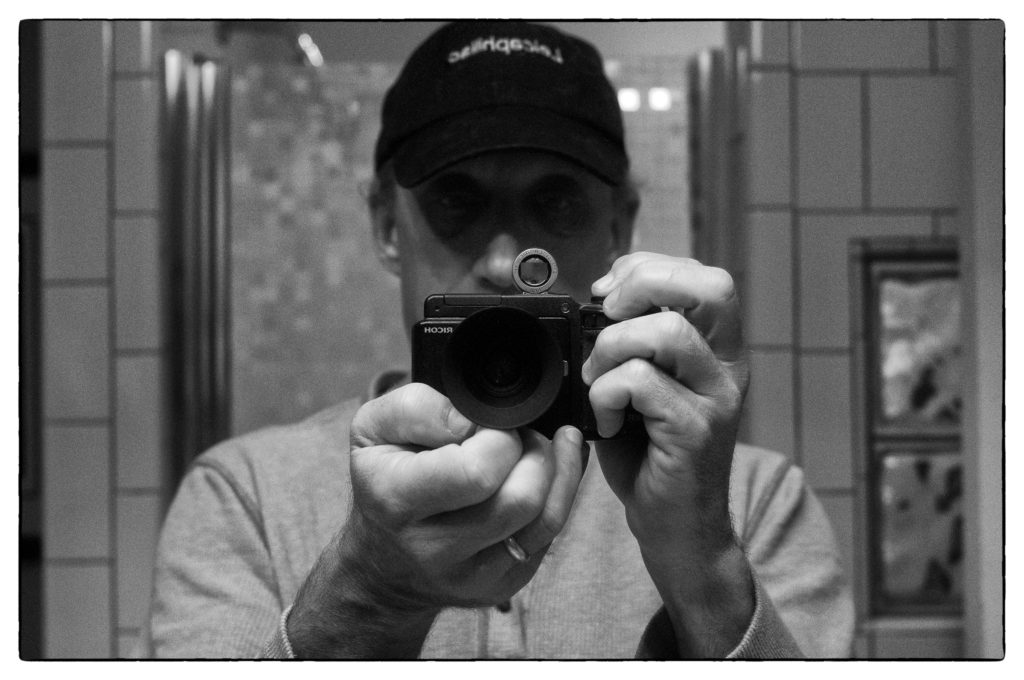 Voigtlander Color Skopar Classic 35mm 2.5
Voigtlander Color Skopar Classic 35mm 2.5
35mm f2.5 LTM VC Color Skopar Pancake
W-Nikkor 3.5cm f2.5
AF Nikkor 35mm f2
Nikkor 35mm f2.8
Nikon E series 35mm f2.5
*************
50mm lenses
Lenses tested were, in order of presentation – a Russian made LTM Industar-22 5c.m f3.5 collapsible; a Russian made LTM Industar-26M 5.2 cm f2.8; a Russian made LTM Jupiter-8 5c.m f2; a manual focus Nikon Series E 50mm f1.8; and finally the current version AF Nikkor 50mm f1.8.
LTM Industar-22 5c.m f3.5 collapsible
LTM Industar-26M 5.2 cm f2.8
LTM Jupiter-8 5c.m f2
Nikon Series E 50mm f1.8
AF Nikkor 50mm f1.8
*************
Conclusions? With the exception of the AF Nikkor, all of the 35’s look pretty much alike. For some reason, the DOF is different on the AF Nikkor than the other lenses, why I have no idea. I see some marginal differences in contrast and how the lens deals with light fall-off behind its plane of focus, but that’s about it. You can easily tweak contrast in LR. Interesting because, while there’s not a Summicron in there for comparison, the VC Color Skopars, which will cost you +/- $350 used, are considered to be excellent optics, not far removed from the traditional 35mm Summicron, as is the W-Nikkor 2.5, at about the same price used, made for the Nikon S cameras. The other Nikkors are super cheap (+/- $200) while the E Series Nikon can be found for $30 used. I’ve always thought the Nikon E Series lenses, derided by purists when they first appeared in the 70’s because they contained some plastic parts, are incredible bargains, the entire line being excellent.
As for the 50’s, they all look pretty much alike again, with the exception of the Jupiter-8, which is markedly softer than the others. With all of the FED LTM lenses, sample variation is the norm. Both Industars look great at f4, indistinguishable from the excellent AF Nikkor 1.8 which Nikon enthusiasts rave about. I paid about $20 each for the FED lenses and the Series E and $80 used for the AF Nikkor.
Would a $3500 Summilux be much better? I doubt it. It may have better MTF charts, feel smoother in operation, make you feel special etc etc, but whatever marginal increases in optical performance it might possess mean little or nothing in practice. It sure is a beauty though; no doubt about it. Is the enhanced pleasure you’ll presumably get by toting it around on your IIIg instead of a 20$ Jupiter worth the extra $3475? Only you can answer that, although I don’t begrudge your decision. It’s your money.
The larger conclusion is that “comparison tests” of lenses are gimics, interesting to read, fun as an intellectual exercise, but of no real value if what you’re looking for is an objective evaluation of the critical optical merits of a given lens and its practical implications for use.
Suffice it to say I won’t be buying that Summilux.
- I’ve posted slightly larger jpegs that you can click on and open for further examination if you’re that sort of person.

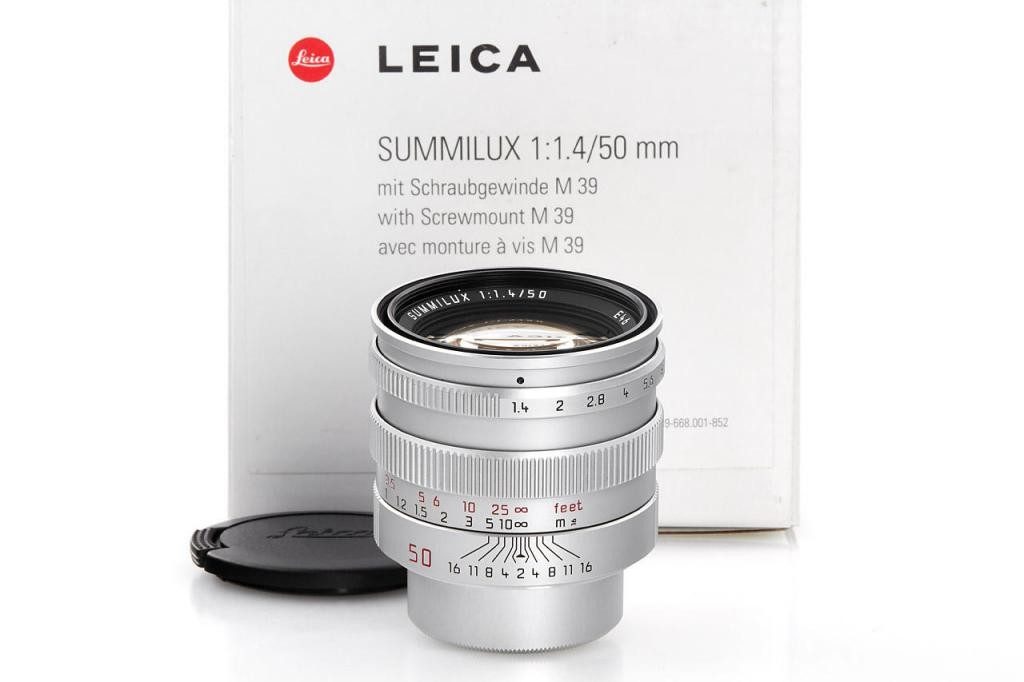
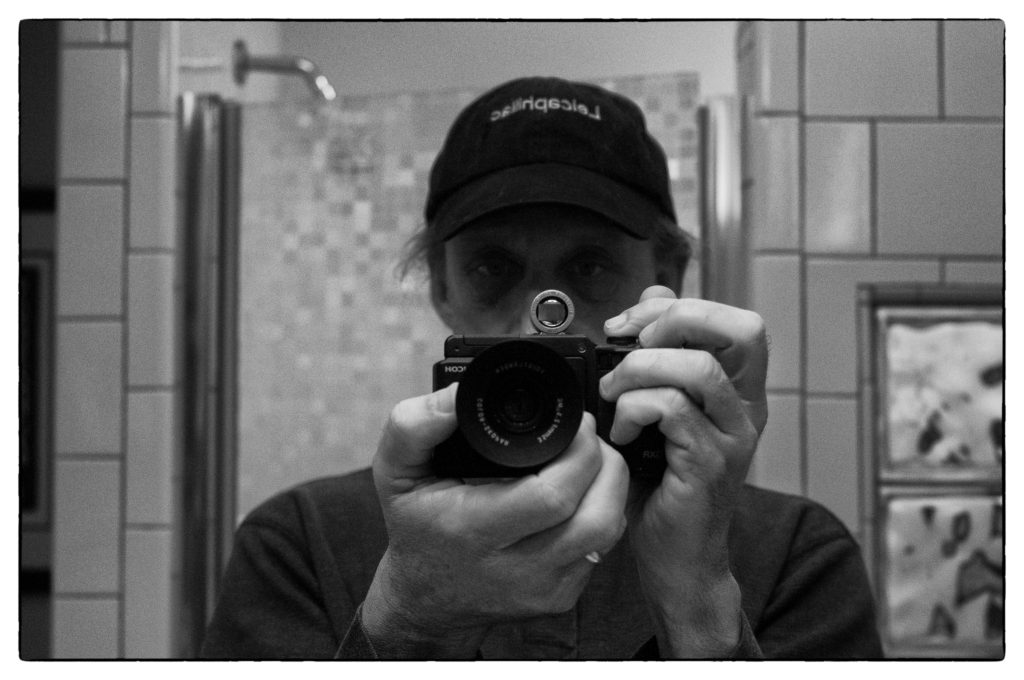
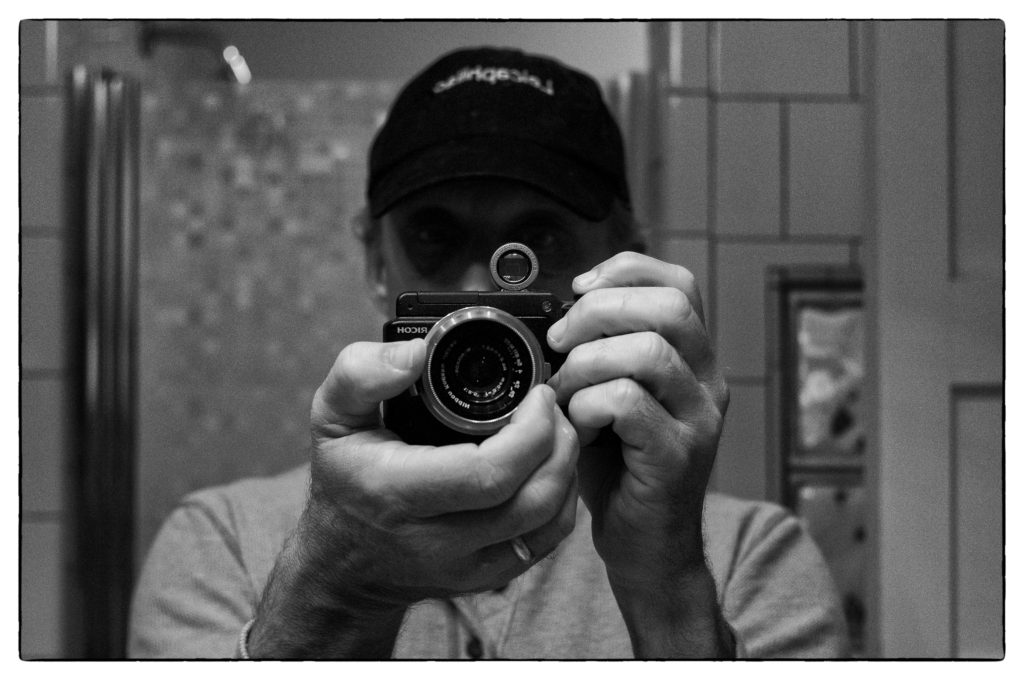
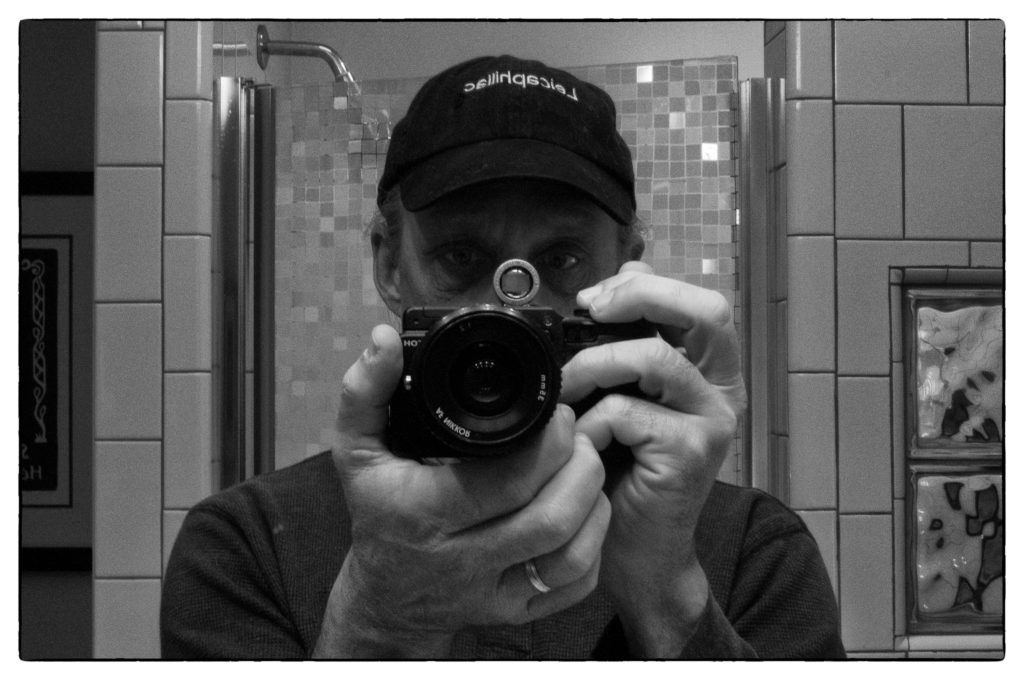
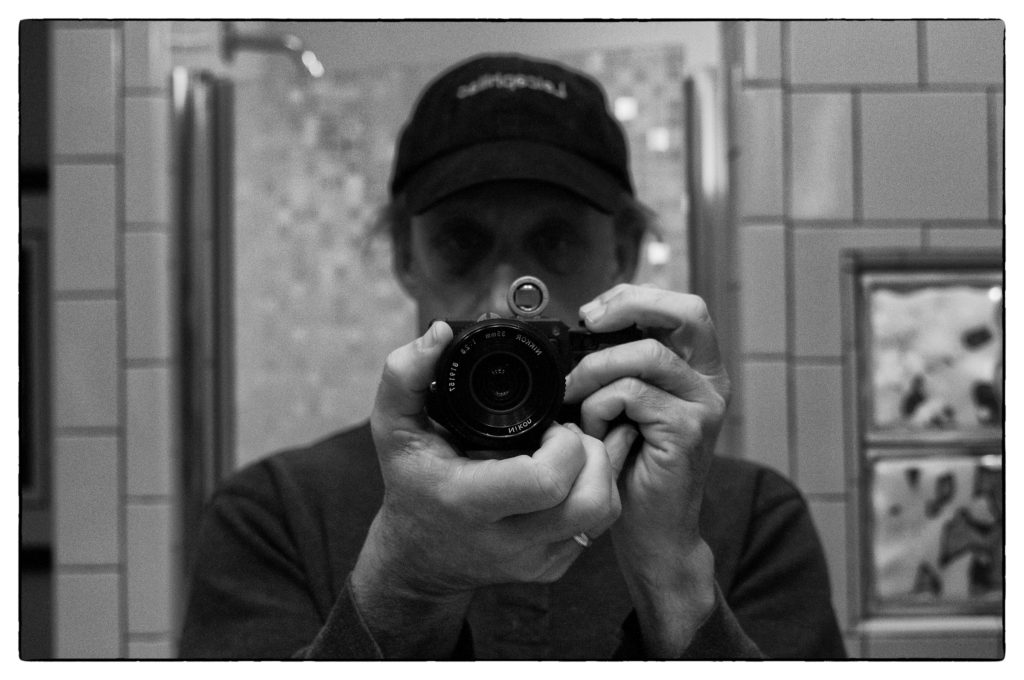
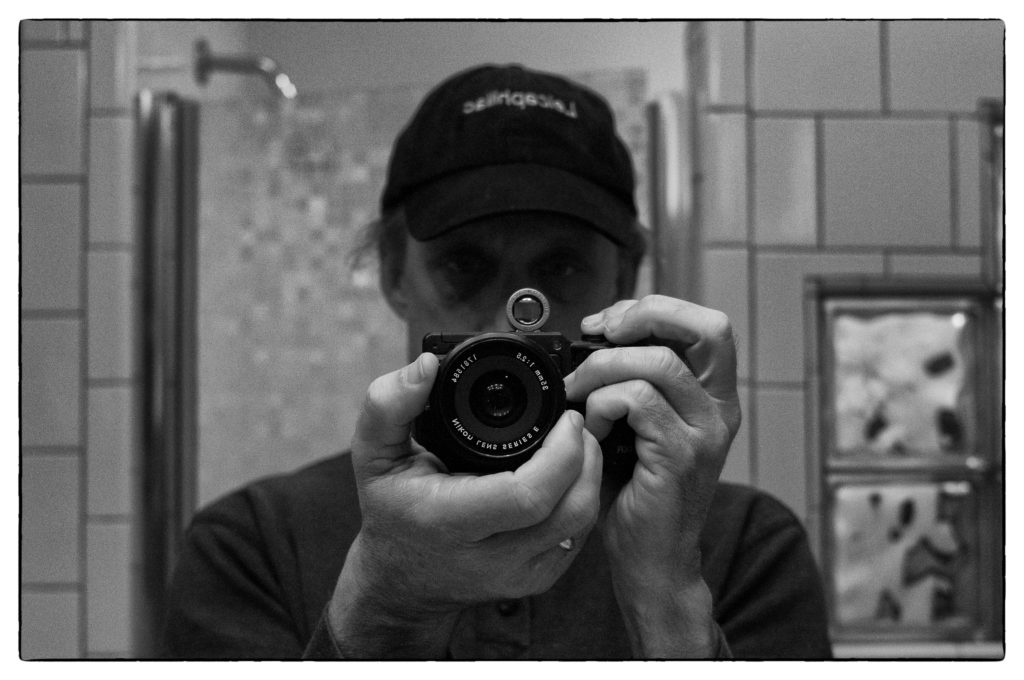


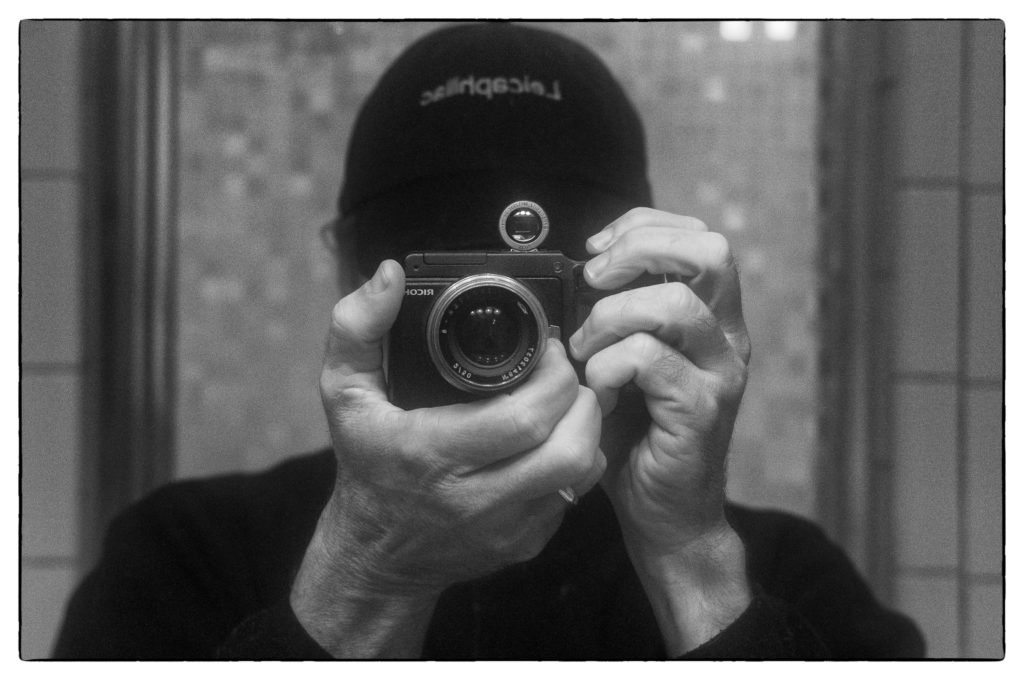
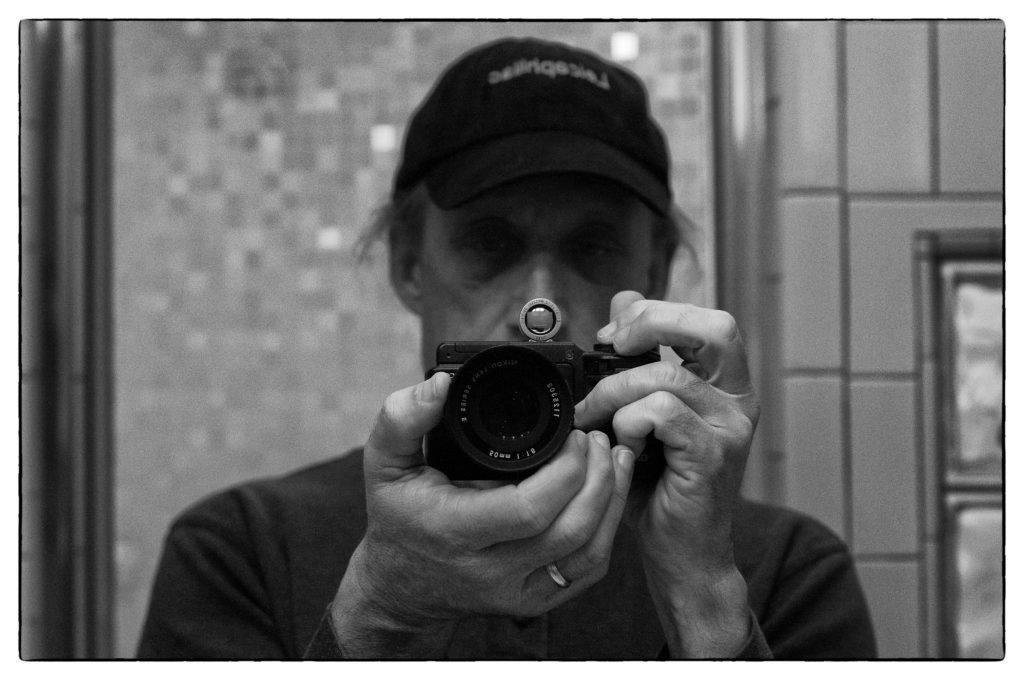
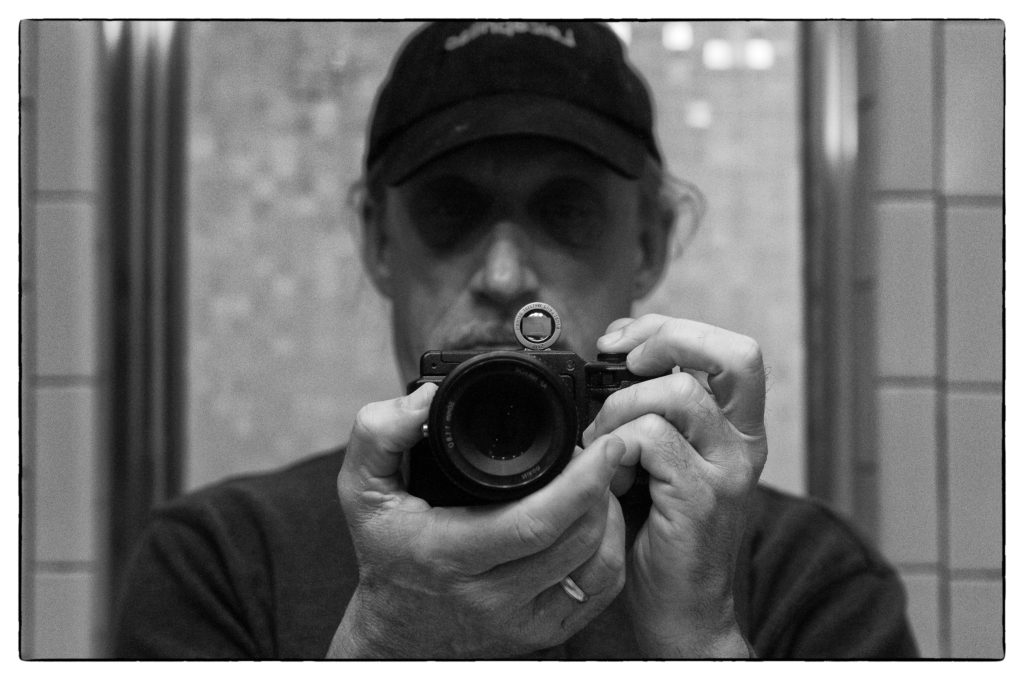
I have just swapped a one year old 35mm Summicron M for an immaculate 50 year old M4…
I know I got the best deal.
I have owned and used a lot of lenses and cameras over a half century, buying this one or that, fooling around and then flipping so I could buy another to fool around with and flip. I was never looking for the elusive perfect tool, just wanted to have fun, make a little money, and learn. What I learned is that I have never had a camera or lens that was not good enough for what I was trying to do. Some were clearly more appropriate for certain uses of course, but the worst performing lens I ever owned–a 50 mm Hektor 2.5–was a better lens than I am a photographer.
That aside, I do like using good tools. They can make a job easier. They can inspire because they are aesthetically pleasing, and they can generate respect for the craft you’re practicing just by example. So why not splurge? ( my idea of splurging is 50 mm Elmar on a 3G)
“I’ll occasionally walk the dogs in my bathrobe, which embarrasses her to no end.”
That’s the problem,Tim: you need to buy them a basket.
On the tests: you are using the wrong subject. Everybody else knows that lenses react best to brick walls and newspapers. If flush, you can buy specially printed pieces of paper with circular stars and other tiny little lines arranged in pretty patterns so as to delight the eye and lend a sense of purpose. Photography always requires a defined sense of purpose.
To make this personal, I must add that in my own case, I found my Nikkor 2/50mm that came with the Nikon F to be “better” than the later 1.8/50mm that I bought when I returned to Nikon having gone through a delicate mental stage where I traded all my Nikon gear for a Pentax 6×7 ll outfit in the hope of improved returns on my stock image sales. (Which shows you that hope springs eternal, even when there is no hope. Indeed, not long afterward, and partly due to digital, the entire industry was reduced to a bad joke for anyone but the agents/agent that survived.)
I eventually added a 1.8/50G because my eyesight went for a walk with your confused dogs. This has made life easier and more accurate, as it were, and as I use it mainly on the cut-frame D200, has shown me that the lens I really, really need is a new 1.8/85G to use on my FF D700 instead.
But as I no longer print anything since HP abandoned me and my B 9180 printer, all I need satisfy is my website. Perhaps I will just keep the money in the bank.
Lenses are the most overrated part of the photo process but the easier to brag about. Stick with what you have as it has a minimal impact on the final result. Of course, different lenses might yields slightly different results (contrast, sharpness, vignetting, OOF rendering, etc…) but it is very unlikely to save or ruin a shot.
You’re right. As a general proposition, the only lenses that really stand out to me as having recognizable looks are the Zeiss Jena 50 1.5 Sonnar and Zeiss 45 f2 made by Kyocera for the Contax G. This doesn’t mean the photos they produce will be any better though.
SAD also means Spousal Aural Deficiency. As told to me by my audiologist after my wife complained I wasn’t listening…
Goodness, Harry, I thought you were going to say SAD stood for spousal arousal deficiency! I believe Westclox had just the right device for that; arouse the entire neighbourhood.
Rob
I’m a cinematographer by trade.
I obsess about my (pretty-much hobby) photography gear. I have Leica stuff and I own the 50mm Summilux ASPH. It is SO IMPORTANT to have the right gear for my photo kit.
As for cinematography, I’ve noticed that I don’t care. I can make just about any camera and lens create a beautiful image, because that’s what I’m paid to do. It’s about lighting and composition. There are cameras that make things easier for creating the image you want. (Arri Alexa). However, just today while shooting for a cheesy syndicated daytime advice show with a “doctor” that goes by “Dr. [insert first name here]”, I was (as always) forced to use a pro-sumer 1/3″ chip camera. I wanted shallow depth of field for one shot, so I moved the hell back, zoomed in with the crappy built-in lens, and made it look good. It wasn’t as easy as a large chip camera, but I made it happen and it looked pretty good.
I wish I would realize the same for my leisure still photography, but it’s fun to shop and acquire.
Nice story, George. There’s certainly nothing inherently wrong with wanting “the best”; but it’s nice to be reminded occasionally that we don’t need it.
Just to let you know, at the upcoming march auction at westlicht they have a summilux screw mount from 1960, the last year of IIIG production. Dont be afraid tough there is many black paint body…. My own choice would be the ultimate barebone, a leica 1 standard with the elmar 3.5 and of course a blacks one.
It wont make better picture but i would enjoy the proces.
Eric,
It may not make better pictures, but it’s a step on the way.
The very best way of making better pictures is thinking about them instead, and writing about the exprience afterwards. (There is much to be learned from the humble fisherman.)
With that technique, one does not even require a camera!
Rob
Actualy Rob i had a similar idea last year about a book where i would show pictures i took on the left pages and short story describing ones i didnt or missed on right pages. images that dont need description and stories that dont need any images. Jean Bardaji the owner of the leica boutique here in montreal told me something on the same line. He said that once you looked and framed the image, choosen the decisive moment then the picture is done, no camera required.
I suppose there are other reasons to consider a different lens. I went through the same pains you describe around the LTM Summilux. Decided, given my skill, it would be a true vanity purchase. Wound up buying the Canon 50mm 1.4…. “Japanese Summilux” I believe they call it. Yesterday evening I took it and the IID to a local HS basketball game. It is better than my other fast 50mm lenses, but not for reasons normally touted in lens tests: it just felt better in my hand; made the shooting more enjoyable. I think I am going to start paying more attention to that aspect of lenses.
Is it just an age thing?
Hi Wayne, you have a point here when you write “given my skill”. I dont know about yours and i dont want to insult anyone so i will rephrase that as “given the technical choice or decision”.
So we have to consider the whole workflow from shooting to printing or final file.
Here Leicaphilia used a digital camera with as far as i know a cropped sensor at 1600 iso. Then he tweaked or post process the file to adjust contrast among other things. This workflow cant show much difference and as a result they practically all looks the same. Now Tim say he want a new lens for his IIIg so obviously he’ll use film. He usually choose classical high speed film like HP5 TRI-X Double-XX and the like, process with a two bath compensating developer. Will he wet print or go the scanner printer way? According that the lens is stop down 2 or 3 stops this workflow either wont show much difference.
To exploit these lens to full extend you have to step-up the technique a little. I own the asph summicron 35, a Karbe design, and the the summicron-m 50, a Dr Mandler design. I also have used the 35 summicron-m 4TH gen for more then 20 years. I wet print and have 2 or 3 different workflows depending on my mood. Let’s say i use Ilford Delta 100 with DD-X developper then wetprint using splitgrade approach. Will i see a difference between the 35 summicron-m and the asph one, full opened yes on the micro-contrast level, at 4 and beyond i wont tell the difference.
Using the same workflow to compare the 50 elmar-m and the summicron the contrast is obviously different. If i look at the result produced with my olympus zuiko 50 1.4 the difference is clear from the negatives alone.
I’ll stop here, i dont want it to look like an Erwin putts post (no pun intended).
Maybe Tom Hanks can see the difference from something typed on an Underwood vs an Olivetti, I dont. what’s important in the end for me is the story told.
Now for Tim, if i had a IIIg, considering that i already have a summicron-m 50 i would swap it for the Ltm version. Otherwise I would consider a canon 1.4 or even a nikon 50 f2 ltm.
I got your point and you made a good one. But my conclusion is that you are like most of us who read your blog…we got too many lenses.